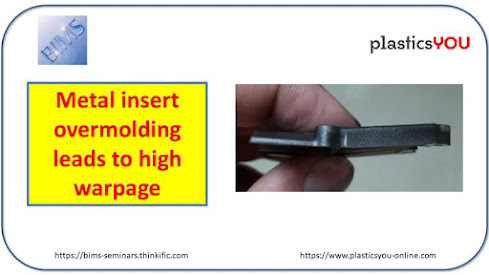Today's KNOWLEDGE Share
Overmolding a metal insert often poses specific molding challenges due to shrinkage disparities, primarily stemming from differences in coefficient of thermal expansion (CTE) between materials. This incongruity leads to elevated residual stresses after ejection, contributing to subsequent warpage.
To alleviate warpage, it is crucial to optimize the alignment of metal and polymer expansion coefficients.
For instance, pairing magnesium with 50% glass-filled nylon can significantly reduce warpage by closely matching their CTEs, outperforming the alternative of overmolding stainless steel with unfilled PA66.
Furthermore, optimizing the gating solution proves advantageous in producing lower warpage overmolded plastic/metal parts, due to the typical anisotropic shrinkage of glass-filled grades.
The parallel to flow direction better matches the metal near-zero shrinkage.
Increasing packing pressure proportionally diminishes the shrinkage anisotropy of glass-filled polymer and concurrently reduces overall average shrinkage, thereby minimizing discrepancies with the insert. In simple terms, the higher the packing, the less prone this overmolded bi-material part is to warping.
Preheating and/or pre-stretching the metal insert prior to molding the polymer can also do miracles for warpage !
source:Vito leo





No comments:
Post a Comment